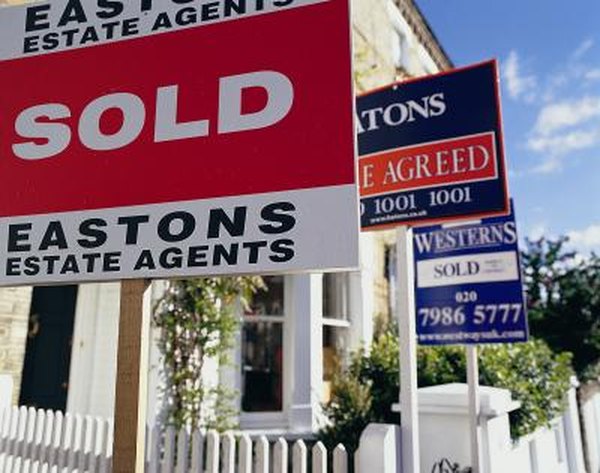How to Invest in Property With No Money Down
You can buy property with no money down even if your banker says no.
Digital Vision./Digital Vision/Getty Images
During the housing boom go-go years, qualifying for a 100 percent mortgage was easy. Credit ratings didn’t matter, money was plentiful and government chartered agencies like Fannie Mae and Freddie Mac guaranteed the loans. With the subprime mortgage meltdown and subsequent recovery, getting a 100 percent investment property loan is almost impossible. As a result, buyers must rely on creative financing outside traditional lending practices to purchase property with no money down.
Wraparound Mortgage
Using a wraparound mortgage, also known as a wrap mortgage, eliminates the problem of obtaining a traditional mortgage. Wrap mortgages essentially turn the seller into the bank. For example, a seller owns a duplex with a $100,000 mortgage. He sells the property for $150,000. Instead of the buyer getting a new loan for the full amount, the seller wraps the $50,000 difference around his existing $100,000 mortgage, and the buyer makes her mortgage payments directly to the seller. The seller retains ownership of the property and continues making his payments to his mortgage lender.
Seller-Held Second Mortgage
If the buyer’s mortgage loan won’t cover the full selling price, the seller can agree to hold a mortgage for the difference. For example, the selling price for a fourplex is $200,000, but the buyer’s mortgage loan only covers $160,000. The seller can agree to hold a second mortgage for the remaining $40,000. The second mortgage is recorded in the public records, and the seller relinquishes all ownership rights to the property. The seller has the right to foreclose on the second mortgage should the buyer default on the payments.
Piggyback Mortgage
A piggyback mortgage is a second mortgage that closes simultaneously with the first mortgage. For example, a buyer wants to purchase an apartment building selling for $450,000. He secures a $400,000 mortgage loan, which leaves a $50,000 balance. If the property has enough equity, the buyer can get a second mortgage from a different lender for the remaining $50,000. Piggyback mortgages normally carry a higher interest rate than first mortgages. Piggyback mortgages are usually written for a shorter term and can have a balloon payment at the loan’s end.
Private Mortgage Insurance
If a buyer can’t get a piggyback loan and seller financing isn’t available, a lender might make a 100 percent mortgage loan if the borrower agrees to pay private mortgage insurance, or PMI. PMI protects the lender in case the borrower defaults on her payments. PMI payments are added to the mortgage amount and paid monthly by the buyer. If the buyer makes his payments on time for several years or sufficiently pays down the loan balance, the lender may cancel the PMI.
References
Writer Bio
Based in St. Petersburg, Fla., Karen Rogers covers the financial markets for several online publications. She received a bachelor's degree in business administration from the University of South Florida.

